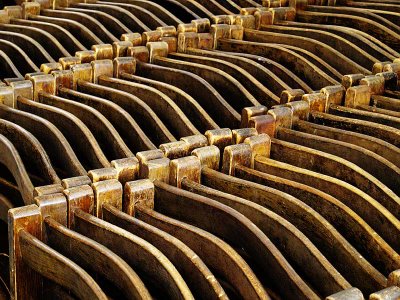How long should an iPod last? Recently the newspapers have carried articles about unhappy consumers whose players have died after a few months, and, even though many are pleased with Apple's replacements policy, some have started to question the likely lifespan of these must-have products, and factored it into their buying decisions.
Apparently the typical life span of a television is 10 years, for a microwave oven it's 7 years, for a computer, 5 years, and a mobile phone only 4 years. I find that last one hard to believe: many people I know seem to replace them yearly, though people like me who use their son's cast-offs probably help to explain the longer figure! There are those who think that these relatively short lifespans are good, because it brings newer, better specified products, and keeps people in employment. However, many think that the earth can't sustain the true cost of the rate at which we buy, use and replace "stuff". A product's obsolescence comes about for four basic reasons: it's irreparable, the cost of repair is uneconomic, new products have improved features, and people's desire for new and fashionable products. All of these reasons are areas where manufacturers and consumers could do something to increase product lifespans. Items can be made that are easier to repair, either by the user or a tradesman. Modular design can be encouraged so that products can be upgraded, rather than replaced, to allow the owner to take advantage of improvements. And buyers can stop being fashion-slaves and see products as tools that do a job rather than lifestyle accessories that reflect their socio-economic status. This won't happen quickly, but there are small signs that it may happen in response to re-use and recycling legislation, the growing ecological awareness of consumers, and the ageing population who have a greater expectation that their consumer durables will be durable!
The folding chairs in the photograph wouldn't I suppose, count as consumer durables. However, they are 66 years old and still in use: that's a long life for a folding chair. It comes about because these are well-made from materials (wood and steel) that can be fixed. They are brought out for use by the audience on sporting occasions at the school where I photographed them. Furniture can last a long time if it is well-made. I have a chaise longue that has been in daily use since I bought it in 1974. It has been recovered half a dozen times by me. It must have begun its life in about 1890! I took the photograph above because I liked the ripple-like, undulating patterns made by the tops of the rows of the stacked chairs. The dynamic quality that comes from the diagonal composition made this the best of the series of shots that I took using a 70mm (35 mm equivalent) macro lens that happened to be on the camera at the time.
photographs & text (c) T. Boughen
